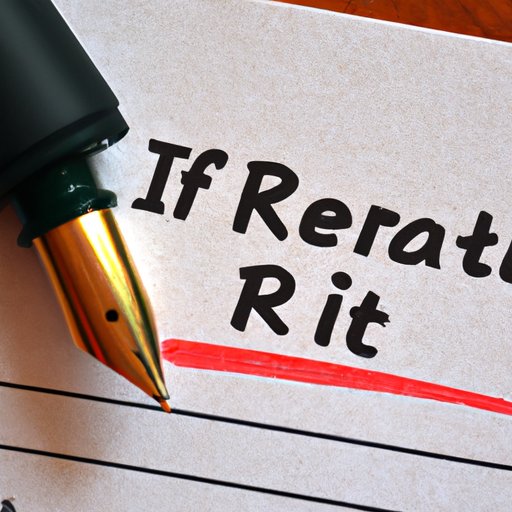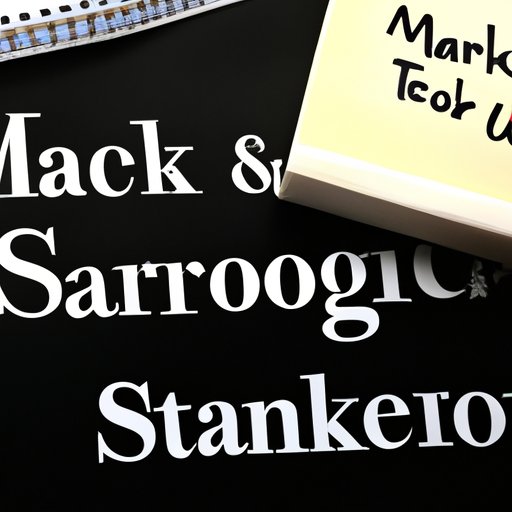
Introduction
Roth IRAs are a type of individual retirement account that allows investors to make after-tax contributions and grow their savings tax-free. Unlike traditional IRAs, Roth IRAs do not impose required minimum distributions (RMDs) after the age of 72, making them a popular choice for those looking to maximize their retirement savings growth. However, Roth IRAs are not immune to market volatility and other risks that can lead to losses.
Reasons Why You Can Lose Money in a Roth IRA
One of the main reasons investors can lose money in a Roth IRA is market volatility. Stock prices can fluctuate frequently and dramatically, impacting the value of individual securities and the broader market. Market downturns can result in short-term losses that can take years to recover. Additionally, some Roth IRA investments may be tied to underperforming assets, such as mutual funds or bond funds that are experiencing low rates of return. Finally, a lack of portfolio diversity can lead to losses if one or more investments experience significant declines in value.
Mistakes to Avoid When Investing in a Roth IRA
Investors can take steps to mitigate risk in a Roth IRA by avoiding certain mistakes. One of these mistakes is investing too heavily in one type of asset, such as stocks or bonds, while neglecting other asset classes. Another mistake is attempting to time the market, or buy and sell shares based on short-term market trends. This strategy has been shown to underperform long-term, passive investment strategies. Finally, investing in high-cost investments can eat away at gains and lead to losses over time.
Risks Involved in Investing in a Roth IRA
Various risks can impact investments held in a Roth IRA. Changes in market conditions, geopolitical events, and other factors can lead to sudden and significant changes in the value of investments. Certain types of investments, such as emerging market stocks or small-cap stocks, can carry higher risk than other types of securities. Investors can balance risk by diversifying their portfolio across multiple asset classes, including stocks, bonds, real estate, and alternatives like commodities or cryptocurrencies.

Understanding How the Stock Market Works
Understanding how the stock market works can help investors make informed decisions when investing in a Roth IRA. Stock prices are set based on supply and demand, and can be influenced by factors such as earnings reports, dividend payouts, and interest rates. Investors can use fundamental analysis to assess the value of individual securities or technical analysis to evaluate the overall direction of the market.
Exploring the Benefits of a Roth IRA
Despite the risks involved, there are several benefits to investing in a Roth IRA. Roth IRA contributions are made with after-tax dollars, so there is no income tax on withdrawals in retirement. Additionally, Roth IRAs allow for tax-free growth over the years, meaning that investors can grow their savings without worrying about tax implications. Finally, Roth IRAs do not impose RMDs, providing more flexibility for withdrawals in retirement.
Tips on How to Minimize Losses in a Roth IRA
To minimize losses in a Roth IRA, investors can take steps to diversify their portfolio, set realistic investment goals, and avoid reacting emotionally to short-term market fluctuations. Additionally, investors can take cues from long-term market trends and focus on long-term growth rather than short-term gains. By maintaining a diversified portfolio, investors can balance risk across multiple asset classes and minimize the impact of any single investment on their overall portfolio.
Examining the Impact of Inflation on Roth IRA
Inflation can have a significant impact on the purchasing power of investments like Roth IRAs. As the cost of goods and services rises over time, the value of retirement savings may decrease if investments do not keep up with inflation. Investors can minimize the impact of inflation by choosing high-growth, inflation-hedging investments, and maintaining a diversified portfolio. By dedicating a portion of their portfolio to assets that are historically resistant to inflation, like real estate or commodities, investors can help protect their savings against the erosive effects of inflation.
Conclusion
While Roth IRAs offer a number of benefits for retirement savings, investors must also be aware of the risks involved. It is possible to lose money in a Roth IRA, but by diversifying investments, avoiding common investing mistakes and taking a long-term, growth-focused approach, investors can minimize risk and maximize their savings potential. Understanding the risks and benefits of a Roth IRA is critical to making informed investment decisions that can help secure financial stability in retirement.





